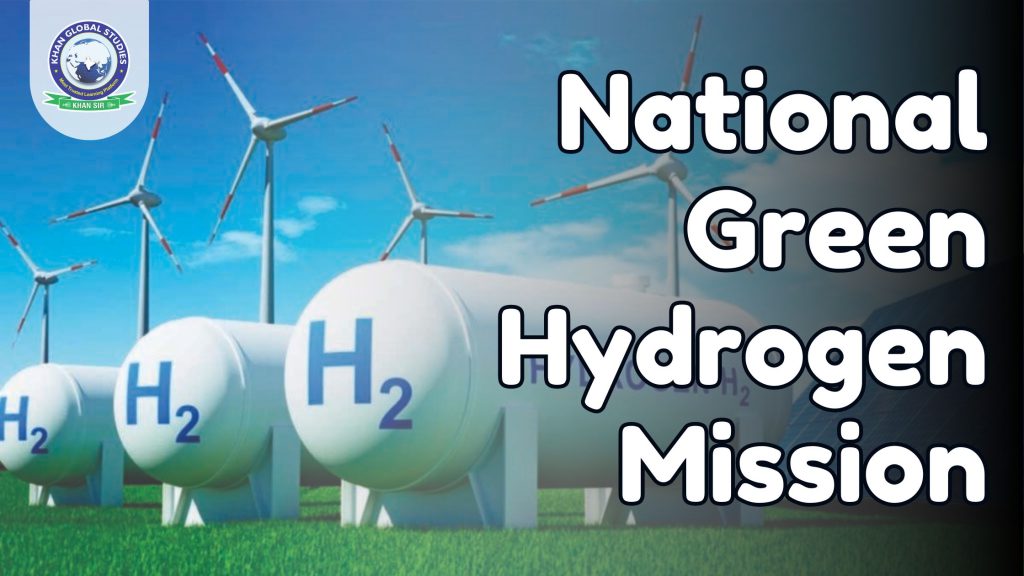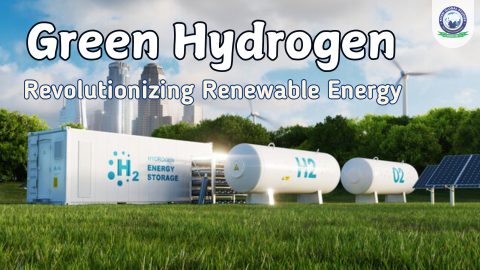In the quest for sustainable and clean energy solutions, green hydrogen has emerged as a game-changer. The National Green Hydrogen Mission aims to make India a leader in this revolutionary energy source. This article discusses the mission’s introduction, objectives, background, sources, components, and risk management in detail and concludes with a future outlook.
Objectives of the National Green Hydrogen Mission
- Reducing Carbon Footprint: A primary goal of the National Green Hydrogen Mission is to significantly reduce the country’s carbon emissions. By transitioning to green hydrogen produced using renewable energy sources, India aims to reduce its dependence on fossil fuels and reduce greenhouse gas emissions.
- Enhancing Energy Security: Green hydrogen offers a way to diversify India’s energy portfolio, thereby reducing dependence on imported fuels. This will not only enhance energy security but also stabilize energy prices, thereby contributing to a more resilient energy economy.
- Spurring Industrial Growth: The mission is set to spur industrial growth by creating new markets and industries centered around green hydrogen. This includes the manufacture of hydrogen production equipment, fuel cells, and hydrogen-powered vehicles, creating employment opportunities and economic benefits.
- Promoting Research and Development: Innovation is at the heart of the National Green Hydrogen Mission. It aims to promote extensive research and development activities to overcome technological barriers and enhance the efficiency and cost-effectiveness of green hydrogen production and use.
Background of National Green Hydrogen Mission
- Global Trends in Green Hydrogen: Green hydrogen is gaining popularity globally as countries seek to meet their climate goals. With major economies investing in green hydrogen infrastructure and research, India needs to harness the potential of this clean energy source and keep up the momentum.
- India’s Energy Scenario: India’s energy sector is heavily dependent on coal and oil, leading to significant carbon emissions. The National Green Hydrogen Mission represents a strategic shift towards a more sustainable energy mix by leveraging the country’s abundant renewable energy resources.
- Government Policies and Initiatives: The Indian government has been proactive in promoting renewable energy and has set ambitious targets for green hydrogen production. Policies and incentives are being introduced to support the development of a robust green hydrogen ecosystem.
Sources of Green Hydrogen
- Electrolysis of Water: The most common method of producing green hydrogen is electrolysis of water, using electricity generated from renewable sources such as solar and wind. This process splits water into hydrogen and oxygen, with zero carbon emissions.
- Biomass Gasification: Biomass gasification is another promising source of green hydrogen. It involves converting organic matter into hydrogen-rich gases, providing a sustainable and renewable feedstock for hydrogen production.
- Renewable Energy Integration: Integrating green hydrogen production with renewable energy sources such as solar and wind farms can optimize energy use and storage. Surplus electricity from renewable energy can be used to produce hydrogen, which can then be stored and used when needed.
- Industrial by-product: Some industrial processes generate hydrogen as a by-product. Capturing and using this hydrogen can increase the overall efficiency and sustainability of industrial operations.
Components of the National Green Hydrogen Mission
- Production Infrastructure: Developing large-scale green hydrogen production facilities is the cornerstone of the mission. This includes building electrolysers, and gasification plants, and integrating them with renewable energy sources.
- Storage and Distribution Networks: Effective storage and distribution networks are essential for the widespread adoption of green hydrogen. This includes setting up hydrogen storage tanks, pipelines, and fuelling stations to ensure a continuous supply to end-users.
- Research and Innovation Centres: Setting up research and innovation centres will promote technological advancements in green hydrogen. These centres will focus on improving production technologies, developing new applications, and reducing costs.
- Regulatory Framework: A supportive regulatory framework is critical for the success of the National Green Hydrogen Mission. This includes setting safety standards, providing incentives, and facilitating investments in green hydrogen projects.
Risk Management in National Green Hydrogen Mission
- Technological Risks: Technological risks include challenges associated with scaling up green hydrogen production and ensuring the reliability and efficiency of new technologies. Continued research and development are critical to mitigate these risks.
- Financial Risks: The high initial investment required for green hydrogen infrastructure creates financial risks. Government incentives, subsidies, and private investments are necessary to overcome these financial barriers.
- Environmental Risks: While green hydrogen is environmentally friendly, its production and use must be carefully managed to avoid any adverse environmental impacts, such as water use and land requirements for renewable energy installations.
- Policy and Regulatory Risks: Clear and consistent policies are needed to attract investment and drive the growth of the green hydrogen sector. Uncertainty or changes in policies could pose significant risks to the success of the mission.
Conclusion
The National Green Hydrogen Mission represents a transformational step towards a sustainable and clean energy future for India. By focusing on reducing carbon emissions, enhancing energy security, promoting industrial growth, and fostering innovation, the mission aims to establish India as a global leader in green hydrogen. While there are challenges and risks, strategic planning, supportive policies and continued research will pave the way for the successful implementation of the mission.
Frequently Asked Questions
Question: What is Green Hydrogen?
Answer: Green hydrogen is hydrogen produced through the process of electrolysis using renewable energy sources such as wind or solar power, which splits water into hydrogen and oxygen.
Question: How does green hydrogen benefit the environment?
Answer: Green hydrogen substantially reduces carbon emissions as it is produced using renewable energy, providing a clean alternative to fossil fuels and contributing to climate change mitigation.
Question: What are the key challenges in implementing the National Green Hydrogen Mission?
Answer: The main challenges include high initial costs, technical barriers, infrastructure development, and ensuring policy and regulatory support.
Question: How does India stand in the global green hydrogen market?
Answer: India has the potential to become a major player in the global green hydrogen market due to its abundant renewable energy resources and proactive government policies promoting green hydrogen.
Question: What are the potential applications of green hydrogen?
Answer: Green hydrogen can be used in a variety of sectors, including transportation, industrial processes, power generation, and feedstock for chemicals and fertilizers.





